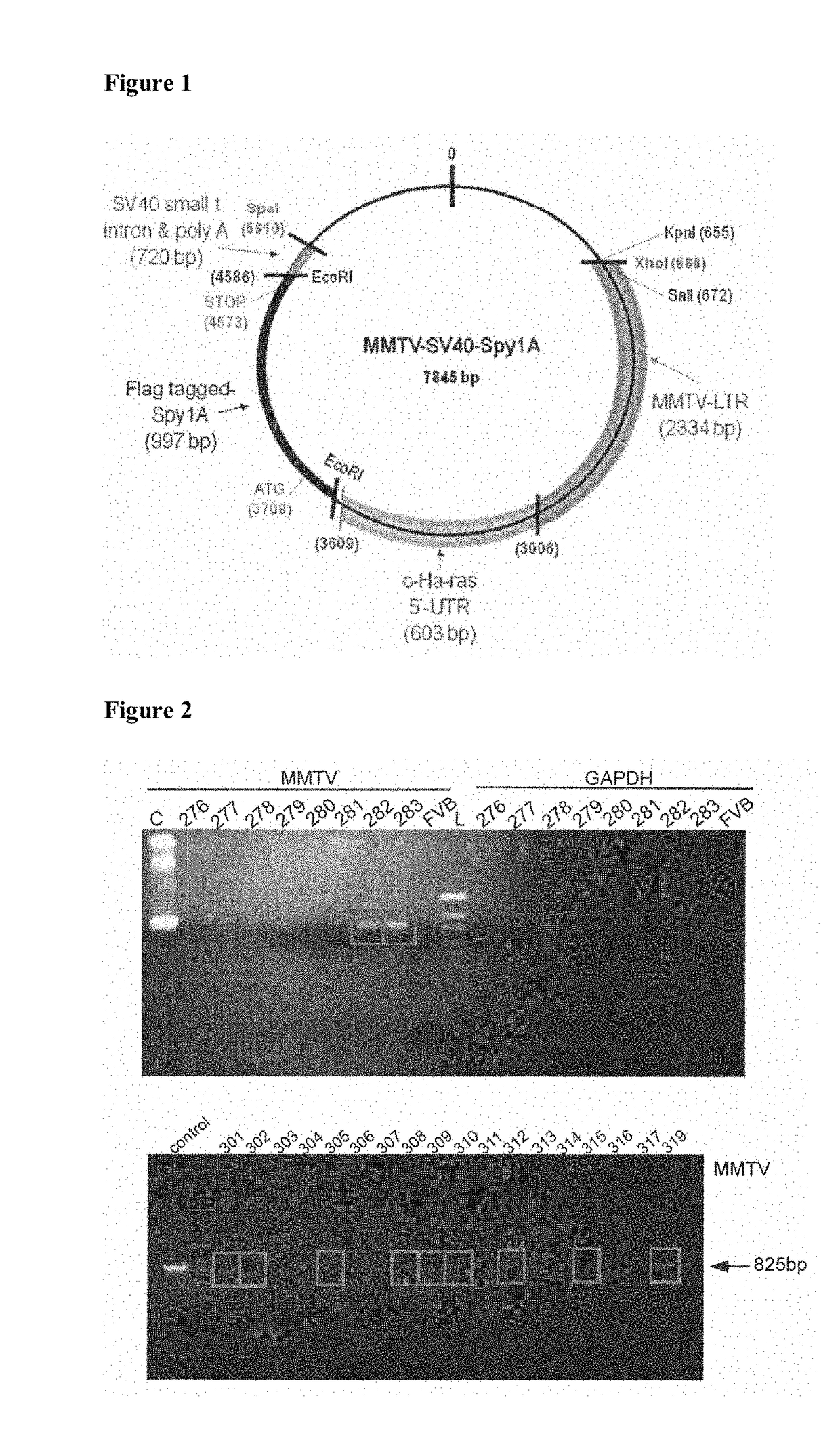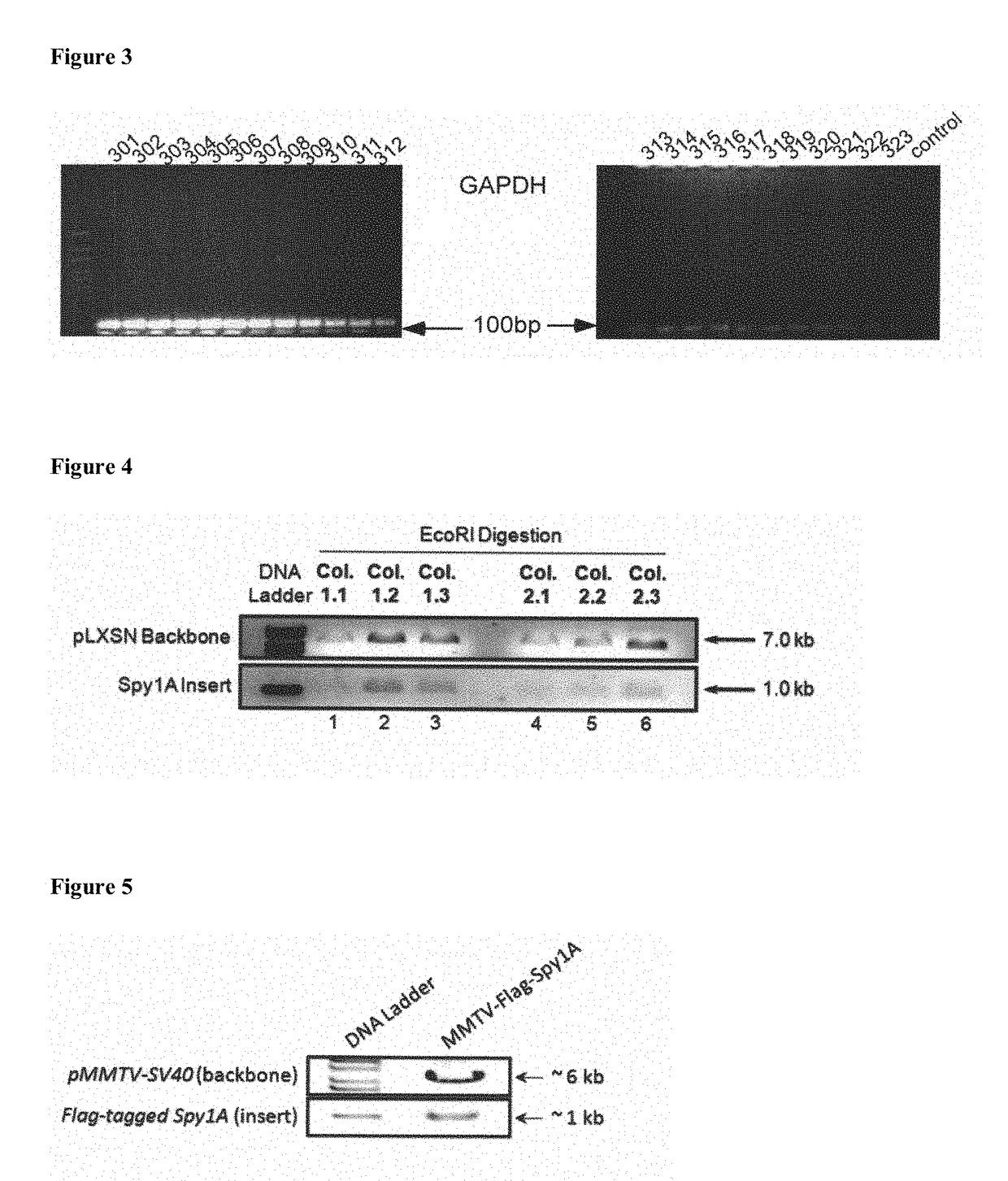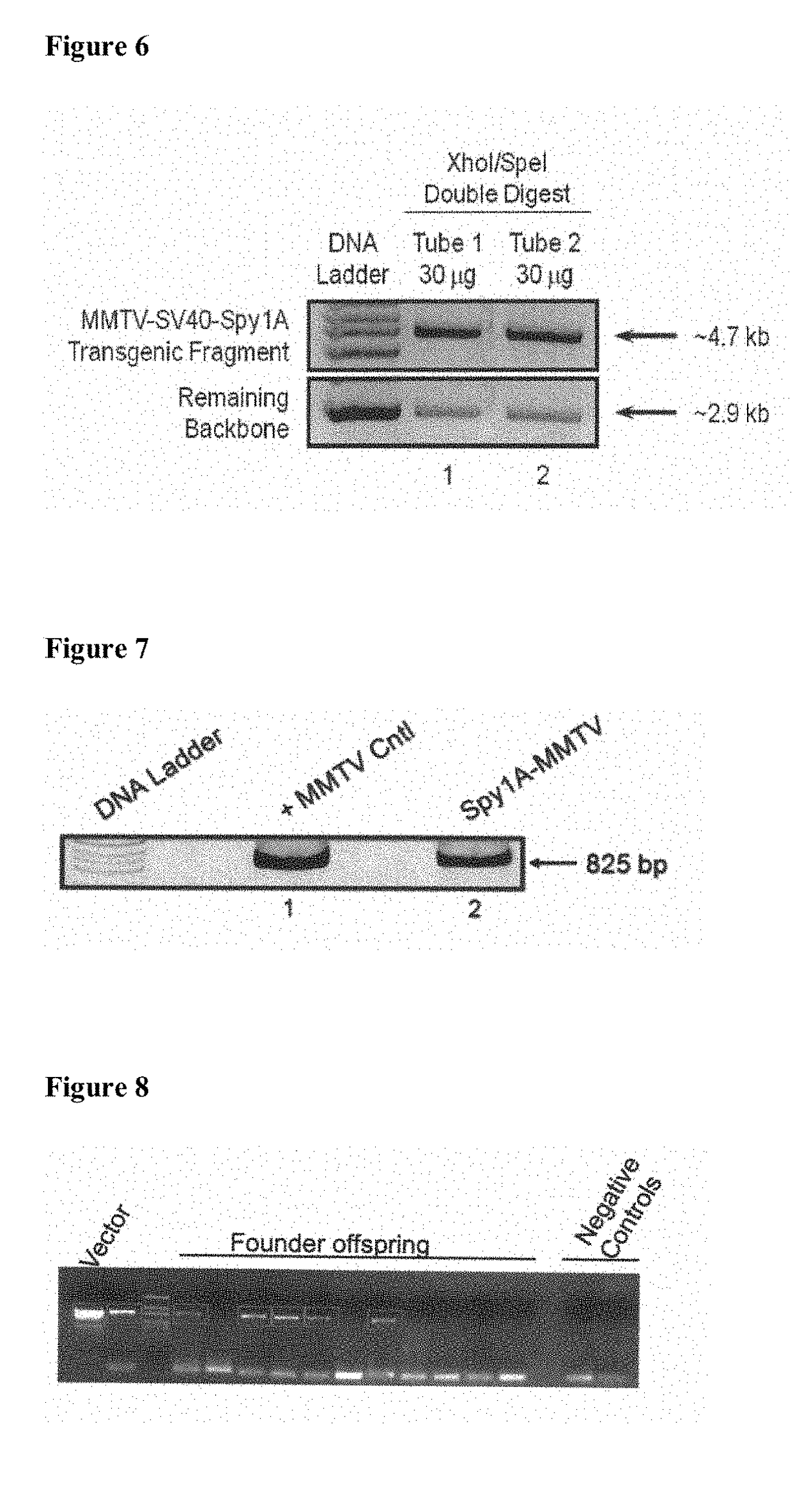MMTV-SV40-Spy1A and Spy1A-pTRE Transgenic Mouse Models
a technology of spy1a and spy1a, which is applied in the field of spy1a-spy1a-spy1a-ptre transgenic mouse models, can solve the problems of precocious mammary development and eventually tumorigenesis in vivo, and achieve the effects of promoting precocious development and tumorigenesis, promoting cell proliferation, and enhancing cell survival
- Summary
- Abstract
- Description
- Claims
- Application Information
AI Technical Summary
Benefits of technology
Problems solved by technology
Method used
Image
Examples
Embodiment Construction
[0088]The gene fragment construct MMTV-SV40-Spy1A (SEQ ID NO: 5)_for the development of a transgenic mouse according to a preferred embodiment of the present invention is shown in FIG. 1. The construct was micro injected at roughly 4.7 kb into 357 fertilized embryos from superovulated female mice and transplanted into pseudo pregnant CD-1 female mice. This resulted in 43 pups being born of which 13 tested positively for the MMTV-SV40-Spy1A as confirmed in the PCR analysis shown in FIGS. 2 and 3.
[0089]To prepare the MMTV-SV40-Spy1A construct, Flag-Spy1A-pLXSN containing the complete coding sequence of the human Spy1A gene conjugated to a flag tag was provided. Site-directed mutagenesis (SDM) was utilized to create a second EcoRI site positioned near the terminal region of the human Spy1A coding sequence (SEQ ID NO: 1) in Flag-Spy1A-pLXSN for efficient removal of the intrinsic poly-A tail.
GAATTCGCGGCCGCGTCGACCTGCGACGGAGCCTTGACCGCCGTTGCCCGGCCCTCTCCCGCGCAGCCCCGGGGTTCCGCAGGAATATTGGGAAACC...
PUM
 Login to View More
Login to View More Abstract
Description
Claims
Application Information
 Login to View More
Login to View More - R&D
- Intellectual Property
- Life Sciences
- Materials
- Tech Scout
- Unparalleled Data Quality
- Higher Quality Content
- 60% Fewer Hallucinations
Browse by: Latest US Patents, China's latest patents, Technical Efficacy Thesaurus, Application Domain, Technology Topic, Popular Technical Reports.
© 2025 PatSnap. All rights reserved.Legal|Privacy policy|Modern Slavery Act Transparency Statement|Sitemap|About US| Contact US: help@patsnap.com



